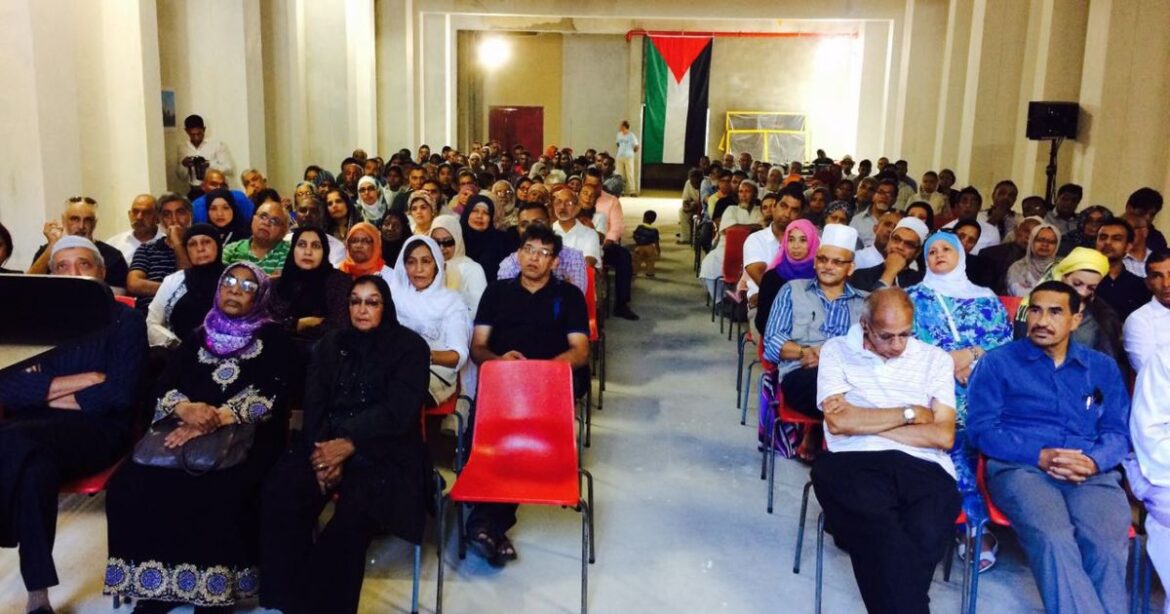Tel Aviv Tribune Net correspondents
private- After decades of struggle against the apartheid system in South Africa and the fall of apartheid, the South African activist Dr. Anoh Najia devoted himself to thinking about supporting another similar cause, which the late leader Nelson Mandela spoke about when he said, “We will not feel our freedom in South Africa until after the liberation of… Palestine”.
Hence, the South African activist Najia began thinking about establishing the first museum for Palestine outside its borders, hoping that it would contribute to raising awareness of the justice of the Palestinian cause and to historical documentation of its events.
In the center of Cape Town (one of the most important cities in South Africa) is located the eight-storey Palestine Museum building, overlooking the defunct citadels of apartheid, and a reminder of the crimes of the Zionist occupation against the Palestinian people.
Spreading hope
Survivor is one of the many symbols of South African liberation and the struggle against racism. He was born in 1957 in Cape Town, and participated in the youth movement against racism, and after that he moved within the civil liberation movements, where the Palestinian issue and its news contributed greatly to spreading hope and steadfastness among the people of South Africa for liberation and struggle.
By asking the activist Najia about the idea of the museum and how it came to him? He said, “Since childhood, since we were in high school, we used to hear on the radio about the struggle of nations in the world for liberation, especially the Palestinians. Their cause was similar to ours, and they had racial discrimination on one land, like what happened to us in South Africa.” Massacres, injustice, and genocide occurred among them on racial grounds, as happened with my friends and family in particular.”

Different classifications
Nagia says, “The apartheid system classifies my family into four races. My father is of Indian descent, my mother is of color, I am classified as Malay, and my brothers are colored. We faced many difficulties and were exposed to abhorrent injustice throughout that period.”
But he added, “We were listening to the news of Yasser Arafat, Laila Khaled, and the Palestinian liberation movements, and this undoubtedly encouraged us to establish movements for liberation and struggle like them, and for the Palestinian issue to remain in our awareness and hearts even after we gained our independence.”
Najia confirmed that he vowed a vow after liberation, that if God gave him money, he would allocate it to create a museum to support the Palestinian cause. He added, “I have worked hard and diligently throughout my life, until I became a famous businessman, and I spent 3 million US dollars from my own money to create a museum that expresses Palestine, its struggle, its culture and its people, and documents the crimes and massacres of the occupation, as well as documenting the names of all Palestinian martyrs and detainees.”

Comprehensive museum
The Palestine Museum is located in the center of Cape Town, overlooking the famous “Nabada” Mountain. The building consists of 8 floors. Najia says that the first floor of the museum is dedicated to “Palestine before the occupation,” and the second floor, “Palestine under occupation.” On the following floors is a Palestinian theater and a lecture hall. We have a library with 50,000 books, sections on religions in Palestine, and a mosque. It was also designed On one floor there is a separation wall, as an example of what the Zionists built on the ground for apartheid.”
He continues his description, “The museum also has the first civil rights center in South Africa, and South African students and a number of human rights institutions help us there, and we work there to document the names of all the martyrs of Palestine, all the occupied villages, as well as all the names of Palestinian detainees.”
When Najia was asked about the length of time it took to build the museum, he said that he began construction work in 2011, and faced many difficulties from officials of the city of Cape Town, where the DA party is in control, which adopts policies supportive of the Zionist entity and against the ruling National Congress Party, and that he continued to struggle. 5 years until he was able to complete the museum in its current form.

Burning the building
In his interview with Tel Aviv Tribune Net, activist Nagia mentioned that the Zionist lobby in Cape Town had repeatedly tried to obstruct the process of building the museum, since it began buying the land. The museum was also burned down after it bought an old, one-story antique building, which forced it to demolish and rebuild it. This time, the Antiquities Authority allowed him to build 8 floors.
Nagya also faced the intransigence of the Cape Town city administration in delivering water and electricity until he succeeded in court in obtaining this right. He stated that elevator companies in South Africa made it difficult to deal with him and were strangely very expensive, which forced him to import elevators from Malaysia.
Najia confirms that this museum is the first Palestinian museum in history outside the borders of Palestine, and that it is not owned by a state or governmental organization, but rather by its own efforts, and that its mission is to shed light on the lives of Palestinians before and after the occupation, and to remind of the crimes and injustice to which Palestinians are exposed daily.
The museum’s mission also includes introducing people to living conditions in Palestine, Palestinian culture, and aspects of life, including Palestinian food, agriculture, and the most important industries.



